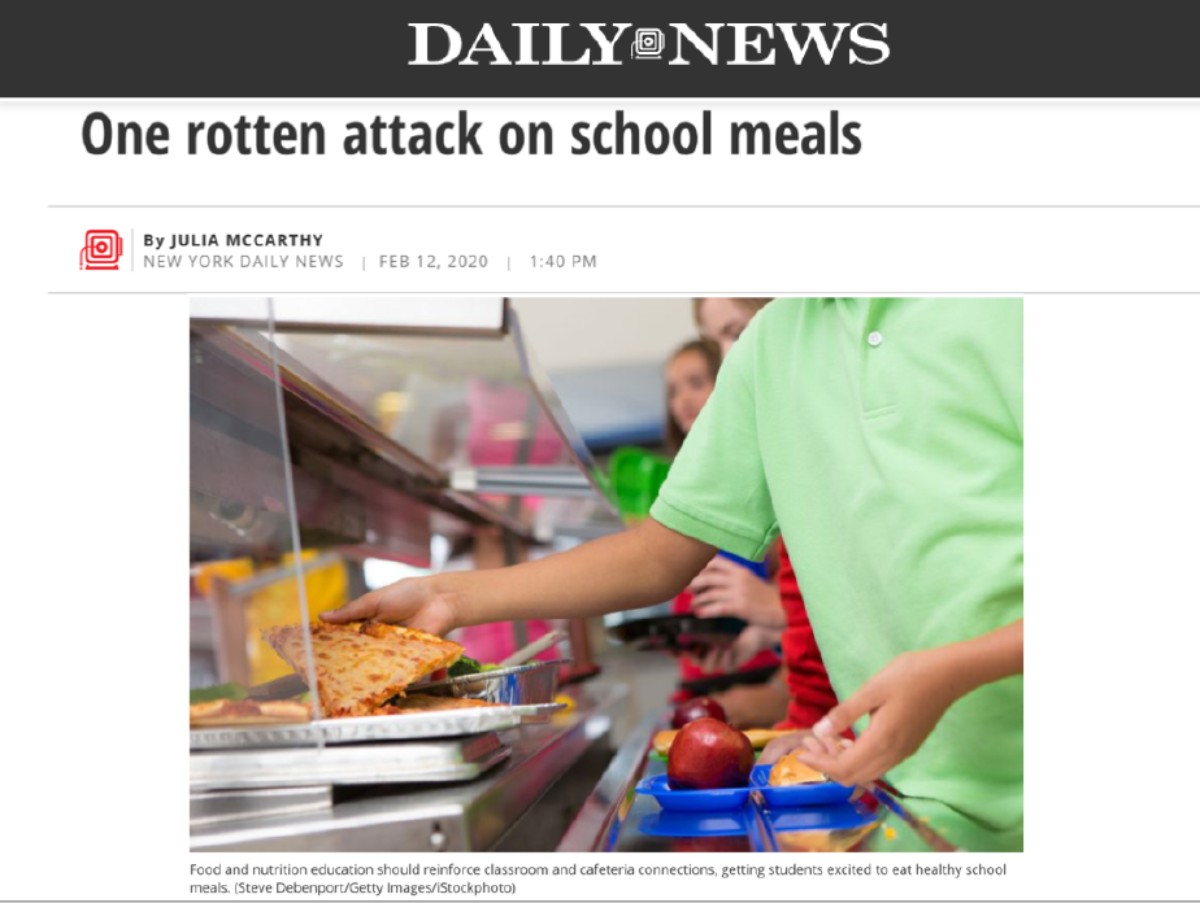Imagine a school encouraging students to read, then replacing their books with videogames. That’s essentially what a new proposed rule would allow schools do — but for healthy eating. The goal of the National School Lunch Program is “to safeguard the health and well-being of the nation’s children.” Yet, the Trump administration is threatening to open cafeteria doors to saltier, fattier processed foods, flouting the federal government’s own dietary guidelines.
The United States Department of Agriculture alleges that trading tater tots for tangerines at breakfast and counting pasta made with vegetable flour towards the vegetable requirement at lunch will increase program participation and reduce plate waste. But the real reason for the rollbacks is industry influence. The food industry’s fingerprints are all over the federal changes. USDA’s own "School Nutrition and Meal Cost Study” shows that participation is highest where school meals are the healthiest, and plate waste has remained constant or fallen in recent years.
For members of the New York City Food Ed Coalition, the proposed changes are especially concerning. Our coalition represents the more than 80 non-profits, businesses, universities and hospitals that provide food and nutrition education programs to New York City public school students. New York City Department of Education offers free meals to all students; approximately 3 of every 4 of these 1.1 million students come from low-income families. School meals can make up a majority of many of these students’ daily calories, so participation is critical.
Food and nutrition education should reinforce classroom and cafeteria connections, getting students excited to eat healthy school meals. Making and eating a salad with classmates; growing tomatoes in a school garden; analyzing a junk-food advertisement; and measuring out teaspoons of sugar in a soda bottle — nutrition education activities such as these develop students’ cooking, gardening and critical-thinking skills. These fun, hands-on experiences with food make students more likely to choose healthy options at lunch.
The Trump administration’s troubling changes put those critical-thinking skills to the test. Allowing schools to serve more pizza and fries in place of the fruit and vegetables these programs are working so hard to normalize, sends a powerful, implicit message to students that these “sometimes foods” can be “everyday foods.” Trying to reconcile the school meal program’s stated priorities with USDA’s actions leads students to only one conclusion: that the administration is placing corporate interests ahead of their health.
New York has long been a leader in school nutrition. Our state attorney general led the charge when USDA significantly weakened meal standards for sodium and whole grains last year, suing in federal court. Thanks to our city’s food standards and the Department of Education’s Office of Food and Nutrition Services’ dedication to provide foods that exceed federal standards, public school students in New York eat meals with less salt and more whole grains, fruits, and vegetables, locally-sourced when possible.
A recent DOE pilot in the Bronx provided students with delicious, scratch-cooked meals, a major shift away from processed foods on many school menus. And funding from the City Council enables the Food Ed Coalition to work to connect students with quality food and nutrition education and sustainably-produced, culturally-responsive, healthy school food.
New York City has demonstrated that we are levels ahead when it comes to school food. Let’s keep it that way. We urge our lawmakers to stop the Trump administration from playing games with our children’s health and use their voices to oppose these harmful rollbacks.
McCarthy is Food Ed Hub director at the Laurie M. Tisch Center for Food, Education and Policy in the program in nutrition at Teachers College, Columbia University.
View the article on NY Daily News.
